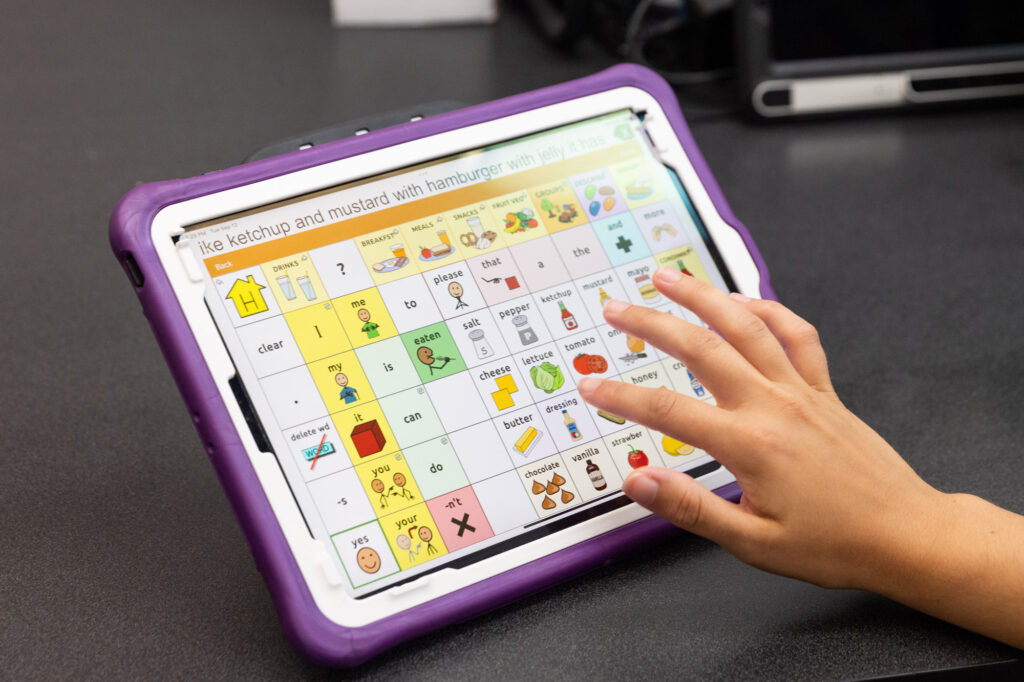
In this day and age, there’s very little that we can’t do with technological advancements. When it comes to helping those with disabilities, especially students, the right applications and devices can make a world of difference.
Everyone deserves to be heard. Communication is a pillar for effective cognitive and emotional development. But it’s not always easy for students who have disabilities that impact their ability to talk to their educators. The good news is that there are several types of assistive technology that can help. With the right tools, students with disabilities can communicate at school with their teachers, peers and staff.
We’ll talk about how assistive technology can help students with disabilities. Then we’ll talk about the different types of technology worth exploring.
Why assistive technology is worth exploring for students with disabilities
Assistive technology refers to devices and software that help a person communicate with others. It’s often used when a disability impacts a person’s ability to speak clearly and effectively. It also helps to show when that person is listening to and understanding other people.
Effective communication in school for students with disabilities is important because it helps them:
- Show understanding of the learning material
- Alert staff when there’s an issue
- Share their thoughts and feelings that deserve to be heard
- Form connections with those around them
- Reduce the risk of misunderstandings
It’s important to remember that communication is a two-way street. The technology can pertain to not only speech communication, but also to showing that the student is listening to and understanding the person they’re speaking with. Disabilities that can impact a student’s communication skills include:
- Cerebral palsy
- Pediatric stroke
- Brain injury
- Autism and other developmental disabilities
- Multiple sclerosis
Types of assistive technology that can help students with disabilities communicate
There are many different types of assistive technology that can be utilized by students with disabilities to talk with their teachers and classmates. Many of these tools are part of augmentative and alternative communication, or AAC.
AAC refers to a variety of devices and techniques that can help support spoken communication for those who struggle to speak or are nonverbal. AAC covers multiple ways to communicate. It refers to everything from signing and gestures to communication boards and voice output communication aids (VOCAs), also referred to as speech generating devices (SGDs).
When it comes to AAC, the use of technology refers to aided communication. That means the student needs external support for communication beyond nonverbal techniques.
Here are some assistive technology tools that can help students with disabilities communicate:
- Tablets with communication apps — Many AAC tools focus on generating speech through recorded or synthetically created means. This often refers to tablets that have communication apps consisting of symbols, images, words or phrases. A student can press one button, or a series of buttons, and the device will vocalize it out loud. Tablets are one of the go-to options for students with brain injuries or who have had a pediatric stroke. They can be as personalized as possible to the student’s abilities, which is especially helpful as they grow and improve their skills.
- Overlay VOCAs or speech-generating devices — These AAC tools use paper-based overlays that are placed over recorded messages. The overlays depict words, symbols or pictures that, when pressed, say the message out loud. These speech-generating tools can vary in levels. They can be adjusted based on the situation and setting that it’s being used in. This technology is often a more affordable option when compared to tablets, though it has fewer customizable options. It may be less challenging for students with severe disabilities.
- Message sequencer VOCAs — For one-on-one conversations between a teacher and a student, message sequencers can be beneficial. These devices allow a student to relay a series of go-to recorded messages, such as, “I’m OK” and “Thank you.” It helps them follow the natural rhythm of a productive conversation. While some sequencers put the messages in order, others can mix them up. These can be helpful for students who struggle with their speech but aren’t nonverbal, such as those with a brain injury.
It’s important to find the assistive technology that works best for a student. It should fit their needs, literacy, and physical abilities. It should also take into account their vocabulary and what they need to communicate, such as asking questions or saying what type of help they require at a particular moment.
Ability KC has assistive technology services to help students with disabilities communicate in school
Finding the right assistive technology for a student with a disability can help them communicate not only in school, but also throughout their everyday lives with their family at home or with members of their community when they’re outside of the home.
At Ability KC, our Adaptive Computer and Communication Technology (ACCT) Program team can help students with disabilities to communicate both in and out of the classroom with augmentative and alternative communication and various assistive technology tools that will support the student in their educational activities. With the right technology and strategies, we can help them find their voice and be engaged with those around them. We also have a therapeutic preschool that utilizes these technologies. Our assistive technology speech and occupational therapists address needs across the educational spectrum for those receiving other services at Ability KC, and for those who are specifically requesting assistive technology services.
Ability KC is a designated Comprehensive Outpatient Rehabilitation Facility (CORF) with a Commission on Accreditation of Rehabilitation Facilities (CARF) accreditation. Contact our team today for more information or to schedule an initial appointment.